|
When local Richmonders hear “Scott’s Addition”, they usually think about the breweries that are dispersed throughout this bustling neighborhood. Yes, Scott’s Addition is known for its plethora of breweries that inhabit big warehouses - along with the countless selection of beers offered - but there is in fact a lot of history buried beneath the surface, too. Located north of Carytown and The Fan District, this cultural neighborhood not only highlights the historical industrial movement within Richmond, but it also encompasses modern trends involving food, art, and music. What's in the name? In the early 1700s, the Mayo Plantation, owned by Colonel John Mayo, encompassed the city of Richmond. During this era, owning land represented wealth and respect. It was also common practice to give land as dowry in marriage in order to link two families together. Major General Winfield Scott, who was recognized for his heroic actions in the War of 1812 and Mexican War, was given part of the Mayo Plantation as dowry for marrying Elizabeth Mayo, daughter to Colonel Mayo. This piece of land inherited by Major General Scott became the neighborhood Richmonders now know as Scott’s Addition. This history brings to light how “Scott” was added to the neighborhood name. But where did “Addition” come from? It was not until 25 years later after Major General Scott’s death did Scott’s Addition undergo significant transformation. During the 20th century, a mass movement of businesses started to shift from downtown Richmond to the area now known as Scott’s Addition; in addition, there was a concentration of major transportation methods, including railways and highways, there - but the area was technically outside of the city grid. Because of these major changes, the area was annexed into the city of Richmond as an extra, well, “addition”! Transformation of scott's additionBeginning as a plantation and now a highly developed area, Scott’s Addition went through two distinct waves of development. Prior to the 1900s, the area was underdeveloped. When the first wave of development came in the early 1900s, it was minimal with some sparse residential dwellings built. By 1916, an increase in railway traffic and the creation of various train stations along the north and west side of Scott’s Addition started to slowly transform the undeveloped area. Even though there was a significant increase in transportation methods around the neighborhood, Scott’s Addition was originally used for residential homes, as stated in documented maps of the area. In 1927, however, the Zoning Ordinance was created, which redistricted designated zones for industrial purposes. This marked the beginning of the second wave of development. From the 1930s to the 1950s, factories, plants, and commercial buildings were built within the area, creating a lasting impression in Scott’s Addition. The "Addition" of Breweries and beer More than a third of the at least 28 breweries in the local Richmond area are concentrated in Scott’s Addition alone...and, there are likely more planned. How did this specific neighborhood attract brewers? To begin with, the Virginia beer boom blossomed due to the passing of the Senate Bill 604 in 2012, which allowed places to sell beer regardless if they sold food or not. In addition, though the number of residents already living in Scott’s Addition was not extremely high, brewers believed that establishing breweries in the area would attract more residents to move to the area. Lastly, breweries needed sturdy floors, high ceilings, and ample amount of space to brew delicious beer, and warehouses that were already established during the industrial movement created the perfect solution. Michael Isley, who was the first brewer to make his mark in Scott’s Addition, trusted his instincts and and opened up Isley Brewing Company in October 2013. Since then, breweries from left and right have been popping up. According to a news report, it has been stated that for every 137 apartments, there is a craft brewery. One could spend a day brewery hopping, as there are multiple breweries within a 5 mile radius. As a result, over a third of all craft beers coming from Richmond are solely made in Scott’s Addition. It is no wonder that Richmonders acknowledge Scott’s Addition for it’s constant flow of beer. What to see in scott's additionDespite the domination of the industrial movement in Scott’s Addition, followed by the mass of breweries, the neighborhood still offers cultural surprises through its architecture. From Colonial Revival to International Style to Art Deco, buildings of various styles reflect a wide spectrum of architecture that is hardly seen throughout other parts of Richmond. This unique aspect brings the unexpected edge to Scott’s Addition. With its historical past yet constant, modern additions to the neighborhood, Scott’s Addition remains to surprise local Richmonders year round. Even though this area is primarily known for its breweries, this area still attracts people who do not drink. There are plenty of trending food places that receive high reviews, including Lunch and Supper, Fat Dragon Chinese Kitchen, and Stella’s. There are also a couple of cute coffee shops that are great for getting work done outside the office. In addition, just outside Scott’s Addition are the Virginia Museum of Fine Arts and Carytown. With plenty to offer, it is crazy to know that Scott’s Addition almost didn’t become a part of Richmond. However, whether you’re grabbing a cold beer on a hot summer’s day or taking a stroll through the beautiful neighborhoods, you will be glad that it did.
0 Comments
Hey RVA, we return to our Better Know A Vendor Series with Mike Lampros, the owner and operating manager of Gunther’s Gourmet. He is here today to give us an inside look at the company. Thanks for sharing with us, Mike! What ignited the spark in you to start your business? Tell us the story of how you and your business idea first met! Born and raised in Roanoke, Virginia, we Lampros brothers set out on very different paths that eventually merged into what today has become Gunther’s Gourmet Groceries, LLC. Although we had each had worked in a variety of restaurants throughout our high school and college years, neither of us had seriously considered working with the other - much less together in the food industry. My older brother, Nick, went into the private practice of law after graduating from Duke University in 1984 and Vanderbilt University School of Law in 1987. I continued to work in restaurants after graduating from the University of Richmond in 1988, then decided to attend the Culinary Institute of America, from which I graduated in 1991. 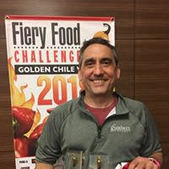 While working as the Executive Chef at Crestar Bank (now SunTrust Bank) and then Reynolds Metals (the makers of Reynolds Wrap® Aluminum Foil and other products) in Richmond, Virginia, I began to develop various salad dressings for use at corporate dinners. That experimentation continued after I left those posts and eventually led to the development of Gunther’s three vinaigrettes and marinades, which I originally sold to small gourmet and food shops from the back of my Jeep. As interest in my products grew, I turned to Nick for assistance with the legal side of the business. While Nick handled the paperwork, I handled sales and expanded the product line by developing and adding Gunther’s various salsas to the mix. Today, we two brothers actively work together to develop new flavors and recipes and to grow the business. Our love of food and willingness to experiment has allowed us to develop a line of products and flavors that surpasses what is generally sold in today’s markets - all while avoiding the artificial ingredients, preservatives, trans fats, and high levels of sodium and cholesterol that are too often found in the products of other companies.
What are the principles, values, or motto behind your business? We strive to give our customers a quality product at a fair price. Our customer service is only second best to the actual product in each bottle. So, you didn’t grow up in Richmond, but having been here a while, what is your attachment to the city now? Originally, I am from Roanoke, Virginia. I attended the University of Richmond. After graduating from U of R, I came and went for several years (NY to CA) but always returned and made Richmond my home. It’s a great city with an eclectic music, food, and drink scene. It has lots of creative people “putting their dream in a bottle.” Richmond is also conveniently located near beautiful beaches, mountains, big cities, and quaint towns.
That is incredible. Congratulations! Thanks for taking the time to chat with us, and we wish you luck on all your future recipe experiments.
Brown’s Island epitomizes the idea of the “urban riverfront” with its stunning views of the city skyline as well as of the natural beauty of the James River. It is a six acre island bordered by Haxall Canal to the north and the James River to the south. The main access point for its many visitors throughout the year is the Foundry Park Bridge at 5th Street, making Brown’s Island a key part of Richmond’s Riverfront Canal Walk. tHE ORIGINS OF THE NAME Brown’s Island was apparently not always an island! In fact, according to Richmond planning and development review documents, it likely started as a mere sandbar that transformed into an island over time from a “combination of pilings, alluvial deposits and fill” in the late 1700s. By 1826, Brown’s Island had gained its very first settler, Elijah Brown, for whom the area is named. Brown uprooted himself from his home in Rhode Island and migrated several hundred long miles to settle in Richmond, Virginia. He later established himself as a member of the community by taking a job at the Virginia Manufactory of Arms as a local gunsmith. Interestingly, a later settler - by the name of Neilson - tried to rename the island Neilson’s Island. Unfortunately for him, his name never quite caught on, and Richmonders today continue to call it Brown’s Island. WARTIME TRAGEDYJust a few decades after Elijah Brown settled himself in Richmond, Brown’s Island - like much of the South - became embroiled in our nation’s bloodiest conflict - the Civil War. The island, as the site of the critical Confederate States Laboratory, was right in the thick of the war effort. The C.S. Laboratory, which produced ammunition and explosives for the Confederate Army, had previously been located on 7th Street in the city but was moved to Brown’s for safety reasons after several minor explosions occurred. Little did Richmonders know, the largest explosion had yet to come. On Friday, 13 March 1863, an explosion ruined large sections of the building and collectively killed and wounded more than forty of the workers, many of whom were young women. It is likely that the choice to move the ammunition operations to the Island saved many lives, yet still, some Civil War historians believe this event - with its consequent great loss of munitions - contributed to the eventual Union victory. industrialization and deindustrialization The wartime ammunition plant appeared to be only the start of industrialization on Brown's Island. Much like nearby areas, such as Belle Isle, Brown’s Island quickly became a predominantly manufacturing locale. Power plants usually need easy access to moving water for both energy and cooling purposes, making Richmond’s islands an ideal location for them. In 1894, Richmond Union Passenger Railway constructed a coal plant, which was quickly followed by Virginia Power’s hydroelectric plant in 1899. The coal plant then shut down before reopening as Dixie Paper Mill in 1916, which was bought by Albemarle Paper Company just three years later. In 1936, Virginia Power opened its own coal plant, joining its existing hydroelectric plant and continuing this industrial trend. As industry in Richmond declined over the course of the mid-to-late 20th century, the island began to evolve into the scenic location that we know today. The hydroelectric plant’s production dropped throughout the 1950s and 60s before finally closing its doors in 1968. The Virginia Power coal plant also closed down after enduring severe damage in 1969 from Hurricane Camille, and Albemarle Paper Company eventually donated their property on Brown’s to the city of Richmond for park use. In 1987, Brown’s Island became a part of Richmond’s James River Park System, completing its journey through deindustrialization. Today, Brown’s Island is a fantastic city attraction covered with lush green grass and shaded by sycamore trees. Much to the joy of locals and tourists alike, it is open every day for the public from sunrise until sunset. Although few reminders of its past remain, Brown’s Island has taken on a new identity as a popular venue for concerts, like the Richmond Folk Festival, as well as a place to relax and escape the city.
With verdant woods, winding trails, and rushing waters, Belle Isle is a little slice of natural landscape in an urban area. It is a must-see Richmond city park located on the James River and easily accessible via a pedestrian bridge off of scenic Tredegar St. Dozens of people can be seen traversing this bridge to reach the island, especially as spring and summer bring warmer weather to Richmond. With 54 acres, Belle Isle has plenty of space for the crowds of people looking to spend a nice day away from the hustle and bustle of the city. Its many pathways are perfect for running, biking, and hiking enthusiasts. Additionally, for people looking for a more laid-back time, the flat rocks right on the river’s edge allow for relaxed sunning with spectacular views of Hollywood Cemetery, Tredegar Iron Works, and downtown Richmond.
|
| Be sure to pick up a bottle of Keep It Simple Syrup® for your next RVA to Go Box. |













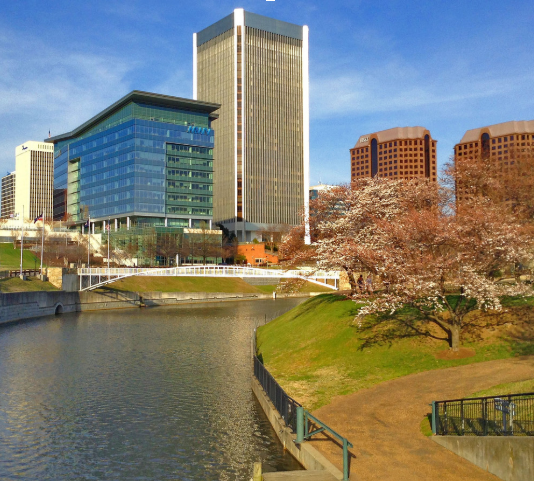









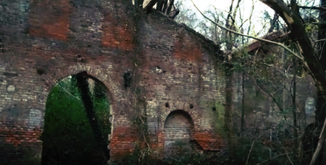


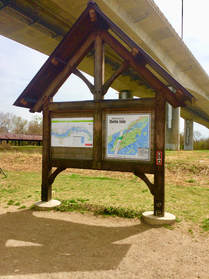
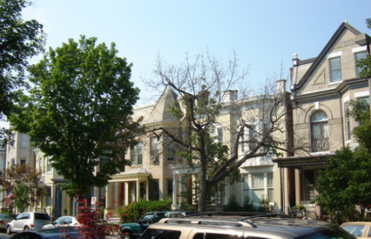
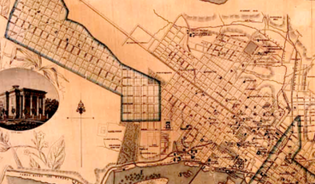



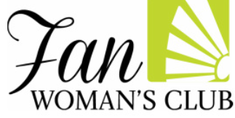



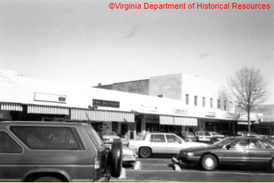



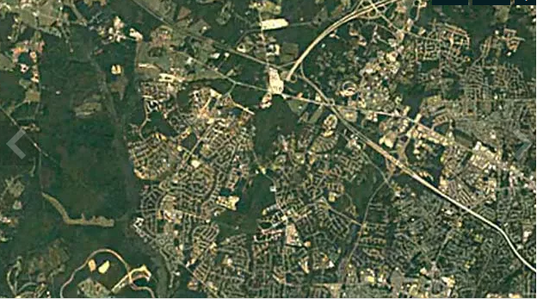
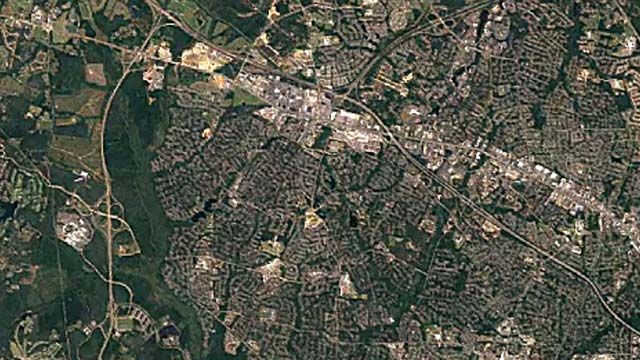




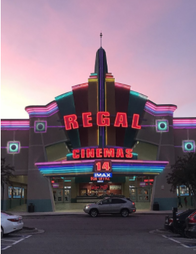
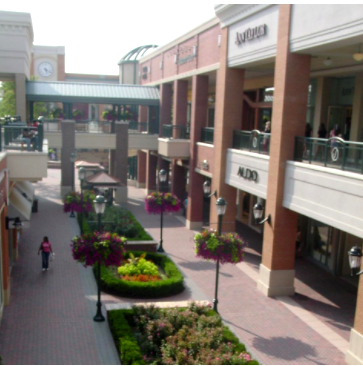
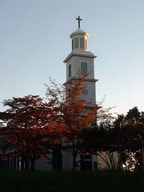

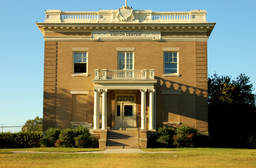



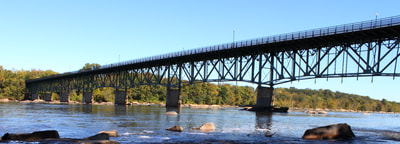











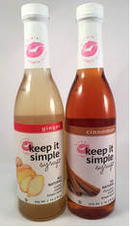
 RSS Feed
RSS Feed

